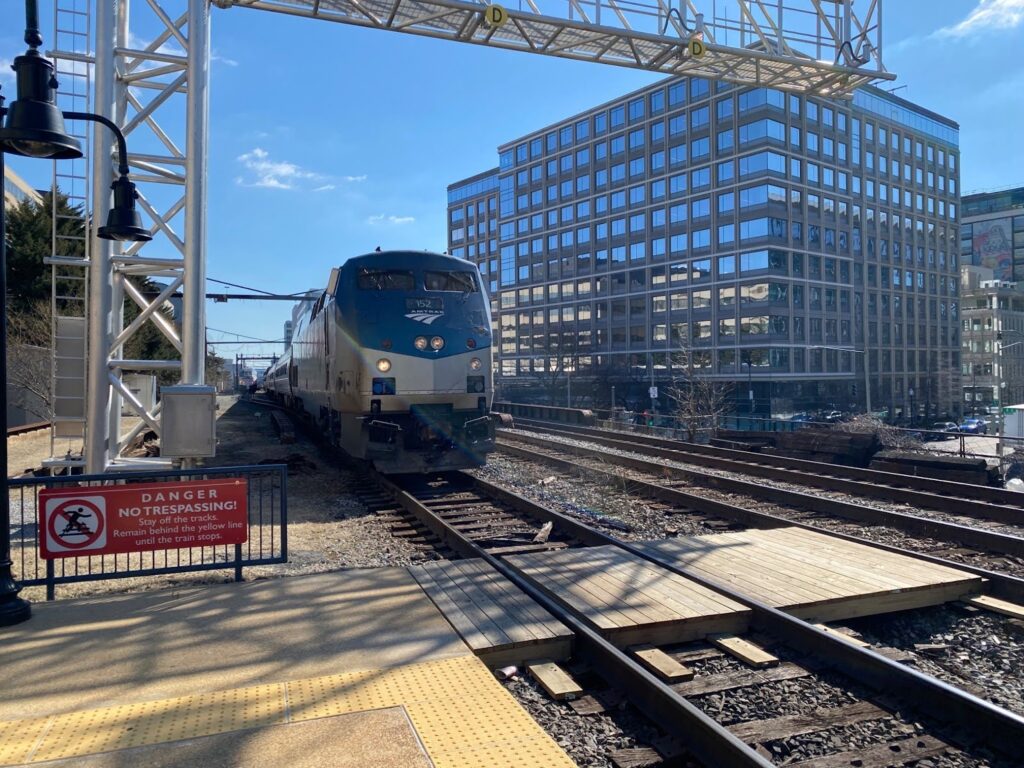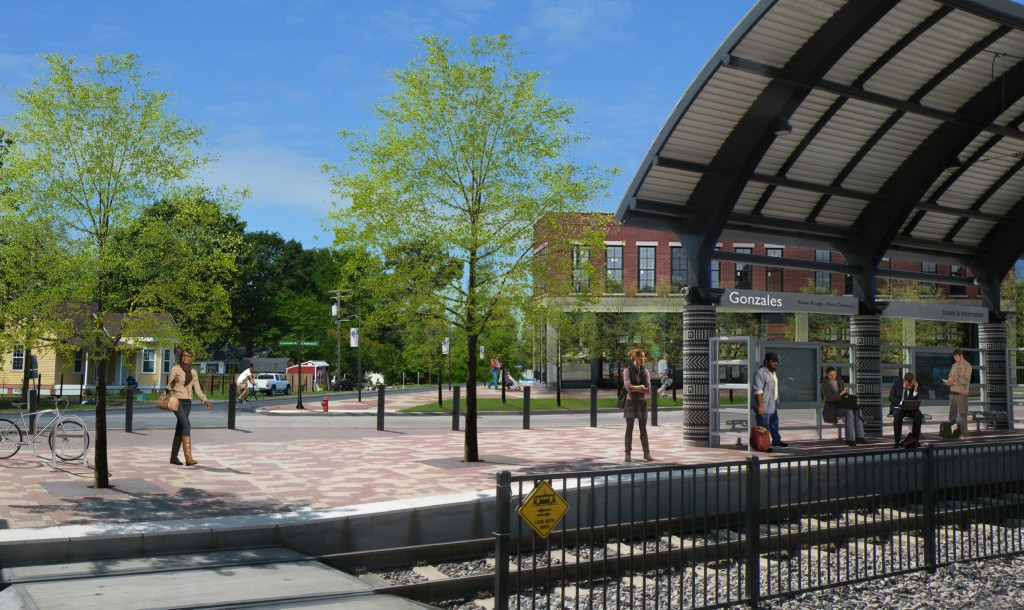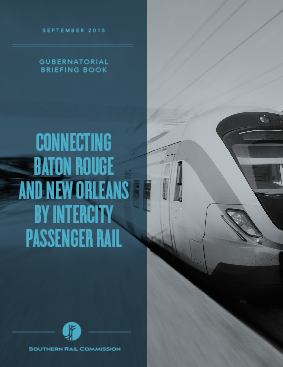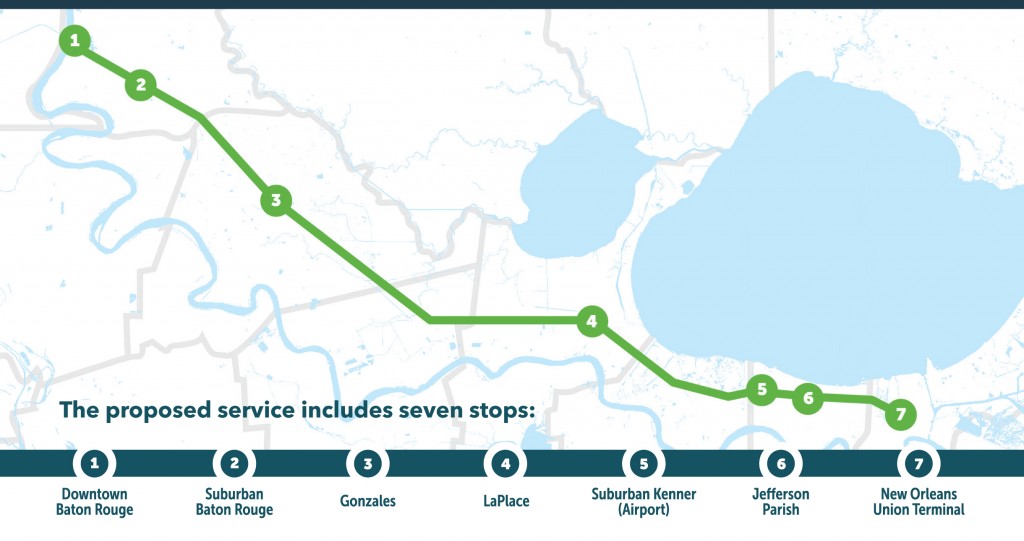
Providing a roadmap for starting passenger rail service between New Orleans and Baton Rouge

New Orleans and Baton Rouge are the two biggest cities in Louisiana, but they lack a passenger rail connection. On Monday, The Southern Rail Commission (SRC) released a gubernatorial briefing book, authored by Transportation for America’s Beth Osborne, that provides the Louisiana governor and legislature with a how-to guide for starting daily passenger rail service between the two cities.

A rendering of the proposed station in Gonzales

Click to download
This briefing book was produced in cooperation with the Center for Planning Excellence.
The idea of connecting Louisiana’s two busiest cities with intercity passenger rail has long been a popular one with residents, local leaders and the business community in both cities. But no matter how popular, starting that service won’t happen without strong leadership from the governor and legislature. This route has been researched in the past, including feasibility studies in 2014 and 2009. But with this report, the SRC and local stakeholders wanted to provide a clear, step-by-step guide to how a new governor could lead the effort to bring passenger rail to southern Louisiana in just a few years time.
The proposed passenger rail service would start with two round trip trains per day along an 80-mile corridor with more than 2.2 million people and nearly 1 million jobs and could serve 210,000 riders per year. But to get to those two roundtrips per day, the report lays out and explains five basic steps needed.
Past efforts to plan potential service were done in full cooperation with Amtrak and the railroads that own the tracks for proposed service. Unfortunately, Governor Bobby Jindal withdrew his support after Amtrak and the railroads had already put staff time and resources toward the plan. To help convince these other partners that the state is serious this time, the Louisiana leadership will have to start with what is normally step two: securing the funding for capital and operations.
Normally, once a state knows what kind of service they want to start and have determined the cost of any capital improvements and operating support needed, the leaders from that state would designate funds for that project. But considering this recent history in Louisiana, it is unlikely that Amtrak or the other freight railroads the state will have to partner with would be willing to commit any time or resource until they have evidence that the state is fully committed. The report discusses ways to raise funding at the state or local level as well as federal programs that can used to support passenger rail service.

The proposed route with seven stops
From there, an operating agreement must be negotiated with the host railroads, Canadian National Railway and Kansas City Southern. This step is easier and more certain to be successful if the operator of the service is Amtrak, due to a special authority granted to Amtrak by Congress to operate on any freight rail line in the country, so long as they pay the incremental cost of that service and it does not significantly harm freight service. With other operators, the freight railroad could refuse to permit access to their line or charge the operator more than they would charge Amtrak.
With money in hand and partners on board, the state could begin needed capital improvements, such as building stations — seven stops are proposed — and finally the rail operator would begin hiring and training workers to prepare for service.
With the strong support of the Louisiana governor and the state legislature, this service could be available to Louisianans in just a few years. The Southern Rail Commission is hopeful that the next Louisiana governor sees the strong economic potential of a new passenger rail line connecting millions of residents and jobs to one another. With seven parishes, a state, a railway authority and freight railroads involved, the strong leadership of a central figure like a governor is essential to making it happen. In fact, all other instances of newly created intercity passenger rail service have had strong leadership from a governor.
We partnered with the Southern Rail Commission and the Center for Planning Excellence to produce this SRC report. Can we help you with something similar? That’s a service we provide. Get in touch.



